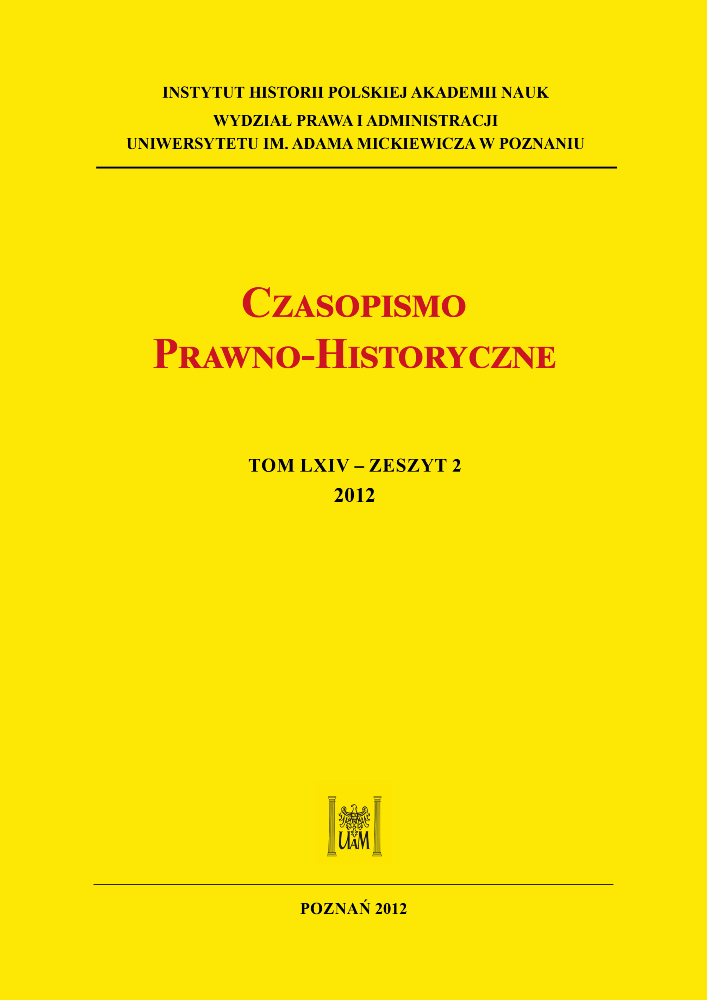Abstract
The subject of this paper is the legislative activity in the field of repair and reconstructions, called exorbitance, of parliaments of the Noble Republic of Poland before the Partitions. To prove his arguments, the author has adopted a thesis that each normative result of the parliamentary activity that required a consent of the three estates in the parliament ought to be termed a parliamentary constitution. The consequence of the above assumption is a belief that the Seym (parliament) constitutions are of heterogenic character. One of the main criteria of the qualification of the internal Seym constitutions is their legal character. The author is of the opinion that constitutions should be divided into four categories: (i) those that make law (contemporarily known as legal acts); (ii) administrative constitutions (being results of the work of the parliament as an organ of administration); (iii) exorbitant constitutions (resulting from the work of the parliament as an organ of state control); and (iv) procedural constitutions (relating to the procedure of a given Seym). The paper focuses in particular on the manner in which constitution’s texts were formulated and the legislative techniques used, and analyses them in light of the Old Poland’s legal culture.
License
Copyright
© by Faculty of Law and Administration, Adam Mickiewicz University, Poznań, 2012
OPEN ACCESS




